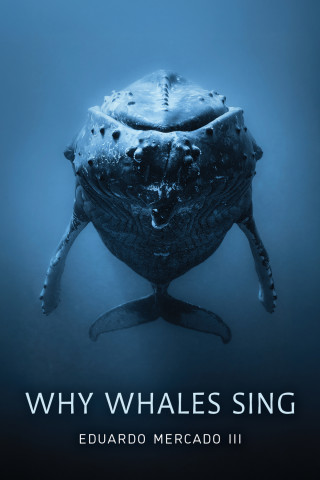
Reviews
A pick for any college-level collection strong in natural history.
In this wonderful volume, anthropologist-paleontologist Ungar provides the most complete source available (or imaginable) on the subject... Highly recommended.
Mammal Teeth is a highly valuable contribution to recent literature on the important subject of dental morphology and evolution.
A superb reference book for anyone with an interest in the subject... I wholeheartedly recommend the purchase of Mammal Teeth: Origin, Evolution, and Diversity to anyone with an interest in dental morphology and the teeth of mammals.
Ungar's book is a superb overview of the field of dental morphology, structured in an easily accessible format. Mammal Teeth is an outstanding and valuable resource for the novice or student starting out in the field, and it can also be used successfully as a reference for professional biologists or odontologists.
An invaluable reference on this fascinating subject for readers at all levels.
Mammal Teeth is an impressive work, both for its scholarship and clear, often entertaining presentation... Mammal Teeth is a must-have for vertebrate paleontologists, physical anthropologists, and mammalogists interested in morphology, the biomechanics of chewing, and feeding ecology. Students will find Mammal Teeth especially useful as a point-of-entry into the literature on mammalian teeth.
Nothing about mammals makes sense except in the light of their teeth! In this impressive, comprehensive volume Peter Ungar explores every aspect of mammalian teeth—their evolutionary origin, histology, development, and fundamental physiological role in fueling a high-energy, endothermic lifestyle. Ungar explains how teeth allow high-resolution tracking of 200 million years of mammalian radiation, thanks to the fortuitous combination of their fossilizability and their relationship to trophic biology. No mammalogist, paleontological or neontological, will want to be without this excellent work.
Food processing is fundamental to the way animals meet the energy requirements of life. Peter Ungar captures several fundamental aspects of how animals do this—by growing teeth with such exquisitely adapted physical and structural properties and with such a diversity of size and shape! Never has this subject been better captured.
Book Details
Preface
Introduction
Endothermy
Food Energy and Teeth
A Very Brief History of the Study of Mammal Teeth
Organization of This Book
Part I: Key Terms and Concepts
1. Tooth Structure and Form
Basic Tooth
Preface
Introduction
Endothermy
Food Energy and Teeth
A Very Brief History of the Study of Mammal Teeth
Organization of This Book
Part I: Key Terms and Concepts
1. Tooth Structure and Form
Basic Tooth Structure
Tooth Types
Deciduous and Permanent Teeth
Dental Formulas, Tooth Notations, and Direction Terms
Nomenclature for Features on the Occlusal Surface
Categories of Cheek Teeth
2. Dental Histology and Development
Fracture Mechanics and Tooth Design
Dental Histology
Dental Development
Genetics of Dental Development and Occlusal Morphology
3. Food and Feeding
Nutrient Requirements
Energy Flow and Food Selection
Diet Categories
Physical Properties of Foods
Final Thoughts
4. Food Acquisition and Processing
Food Acquisition
Food Processing
Final Thoughts
5. Classification of the Mammals
Some Basic Terms and Concepts
A Very Brief History of Classification of the Mammals
Classification Used in This Book
Taxonomy, Systematics, and Teeth
Part II: The Evolution of Mammal Teeth
6. Teeth before the Mammals
The Origin(s) of Teeth
The Early Evolution of Teeth
Final Thoughts
7. The Origin of Mammalian Mastication
The Early Evolution of the Synapsids
Key Adaptations for Mammalian Mastication
Final Thoughts
8. The Fossil Record for Mesozoic Mammals
The Evolution of Mesozoic Mammals
The Evolution of Molar Form in Mesozoic Mammals
The Cretaceous/Paleogene Extinctions
9. Cenozoic Mammalian Evolution
Fossil Monotremes
Fossil Marsupials
Fossil Placentals
Cenozoic Mammalian Radiations
Final Thoughts
Part III: The Teeth of Recent Mammals
10. Monotremata and Marsupialia
Protheria
Monotremata
Marsupialia
Didelphimorphia
Paucituberculata
Microbiotheria
Notoryctemorphia
Peramelemorphia
Dasyuromorphia
Diprotodontia
Final Thoughts
11. Xenarthra and Afrotheria
Xenarthra
Cingulata
Pilosa
Afrotheria
Afrosoricida
Macroscelidea
Tubulidentata
Hyracoidea
Proboscidea
Sirenia
Final Thoughts
12. Laurasiatheria
Cetartiodactyla
Perissodactyla
Chiroptera
Carnivora
Pholidota
Eulipotyphla
Final Thoughts
13. Euarchontoglires
Scandentia
Dermoptera
Primates
Lagomorpha
Rodentia
Final Thoughts
Conclusions
Adaptive Radiation of the Mammals
How Do Teeth Work?
Where Did Teeth Come From, and How Did They Evolve?
Dental Diversity Today and What We Can Learn from It
Final Thoughts
Appendix
Literature Cited
Index





